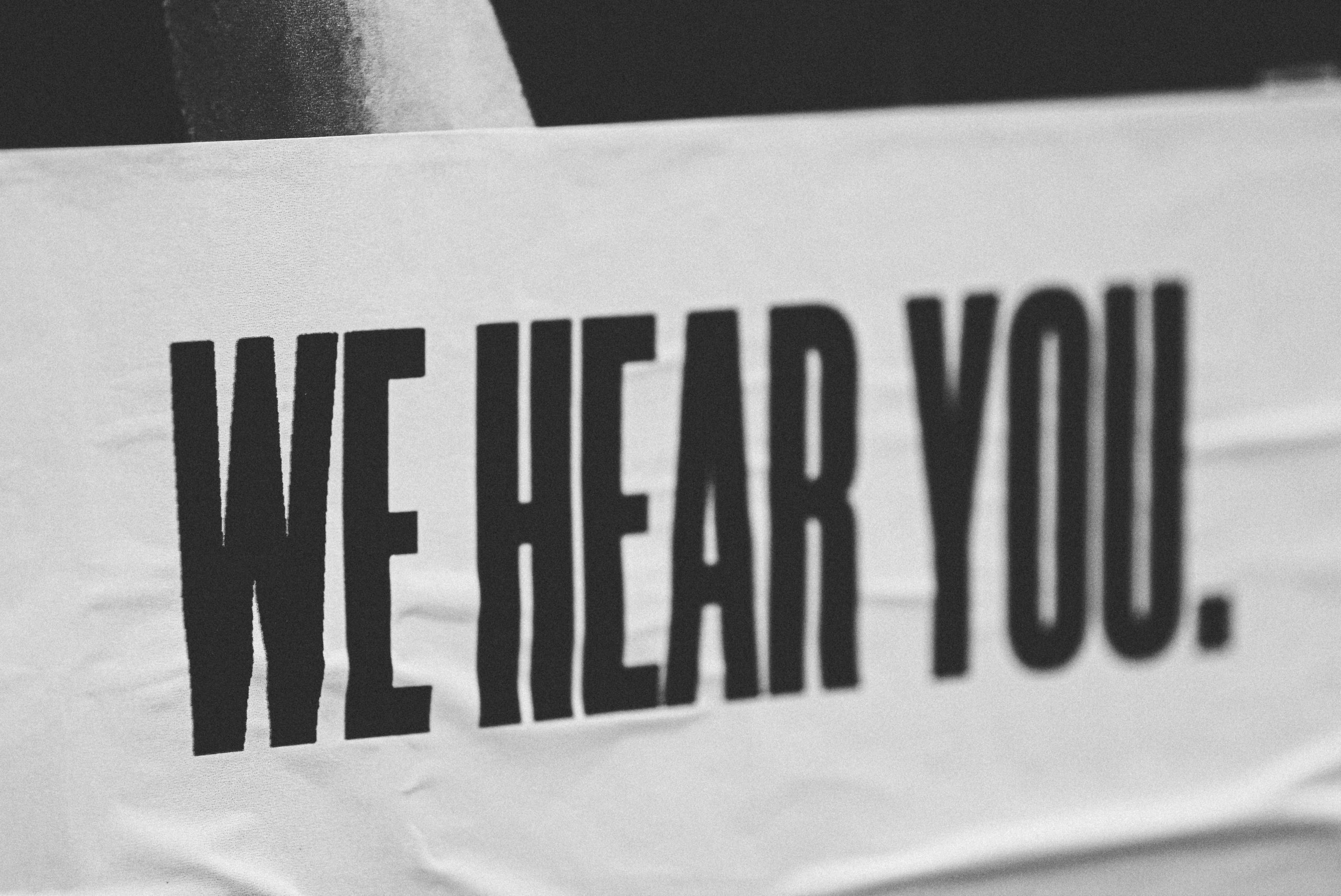
How often do you listen to understand, instead of listening to respond? Have you thought about the difference of those approaches to conversations? In this episode, Janine Hamner Holman sits down with Michelle Beauchamp, a champion among coaches and corporate leader consultants, to discuss the cost of not listening with the intent to understand.
GUESTS: Michelle Beauchamp | LinkedIn
HOST: Janine Hamner Holman | [email protected] | LinkedIn, Facebook, Instagram
Welcome to The Cost of Not Paying Attention. I’m your host, Janine Hamner Holman. I’m so excited, today we have a good friend and a brilliant woman here with us to share her wisdom.
Michelle Beauchamp has combined her 25 years in corporate America and more than 10 years as an entrepreneur to use her brilliance to consult, train, and coach leaders to use their skills to influence and inspire. Her slogan is Unleash Your Inner Champ.
Michelle, welcome to the show. Tell me, what is one thing you’ve realized either your team or clients have been failing to pay attention to and what’s the problem that inattention is causing?
That is such a great question. First I want to thank you for inviting me to come on, Janine.
It’s my honor.
I’m so excited. When you introduced me, I thought, “25 years plus 10 years. She’s old. She’s been doing this a while.”
You’ve been doing this for a minute, like me.
Thank you for saying it’s brilliance and not a bunch of whole experience.
That’s such a great question and I’m going to personalize that question first. There’s a lot to learn. It became clear to me several years ago that I was not paying enough attention to my team when I was working in the corporate world. I recently wrote a book called Relearn Leadership, and that’s the whole thing. I had to realize I needed to relearn some things so I could create more influence and make a difference in people’s lives.
I realized my team wasn’t happy and I didn’t realize I was paying attention to the numbers always. What I needed to do was pay attention first to the people because when the people felt cared for, they were more productive and the numbers would show up for themselves. That was a big lesson for me, recognizing the need to look around and away from the numbers and pay more attention to the people who were responsible for delivering the numbers. I also didn’t pay attention to the impact one unhappy person could have on the rest of the team.

Thank you for your vulnerability. Thank you for sharing that. I was working with a group of leaders a couple of weeks ago. We spoke about what has happened in the world of leadership in the last 20 years. You and I are about the same age. When we were coming up in the world of work, bosses and managers mostly laid down the law and employees tried to keep their heads down and not make too much of a fuss. That’s how it went.
These days there is a completely different set of skills being called forth from managers. We were talking about that and what the skills are and one of the young women said, “I know this is true and I know what you’re saying is right, and man, it just takes so much time.” We all laughed about that because yes, it does take time.
Then we discussed the flip side of that hand. It takes a lot of time, and when we don’t invest that time upfront, we end up paying for that time on the backend. We’ve either got unhappy employees, they’re gossiping, or there’s mischief happening inside the organization because our people aren’t engaged or happy. We end up spending a lot more time trying to fix the problems than if we had invested the time upfront. That’s hard for us humans to remember.
It’s hard to remember until you experience it. Then it becomes evident quickly that it’s worth it to spend the time. It’s a mindset change, instead of spending time and wasting time, it’s about investing time.
I love that reframe. Thank you. Investing time.
When we’re investing time with people, we’re listening. One thing that became clear to me was that I wasn’t listening. I was listening to respond. That doesn’t take much time, does it? Now I’ve learned how to listen to understand. I try and help other people learn how to listen to understand. It’s not about doing your work with your head down. It’s about being empathetic.
In your book you talk about that a lot too, the importance of empathy and understanding the problem the person might be having and working together to solve the problem rather than saying, “Go figure it out and let me know how it goes, how that works out for you.” It’s about working together to try and solve the problem and not making any judgments about them as well.
That’s a big mouthful you said. I’m going to start where you ended, which is not making any judgments. Man, that is hard. As our friend Matt Cahill says, if you have a brain, you have a bias. One thing our brain does is make up stories.

You and I had a hard time getting this podcast scheduled. You could have easily made up a story called Janine doesn’t want to do this podcast with me. What was great is you didn’t make up that story. I didn’t make up a story called Michelle’s being a pain in the butt trying to get this to get this scheduled. You were persistent and I was persistent in working on figuring out a solution together.
So often our brain automatically makes up a story. If we don’t catch it, it’s tricky. How do you help people begin to develop that skill?
Thank you for knowing I wasn’t being a pest, by the way.
You’re very welcome.
So much of it starts with our mindset. I have a statement in my office that talks about mindset. Part of my subtitle is change your mindset. I tell people to start with their mindset. What are you thinking and what’s the meaning behind that thinking? Find that thinking. It goes back to empathy, trying to understand what the other person needs, what the other person wants, and what you can do to support them.
When we’re thinking about the cost of not paying attention, not listening is a problem, you could start making up stories and it could be the wrong story. Relationships can unravel, productivity can go down, and people will be in a bad mood. We don’t want that. That’s why I focus on changing our mindsets.
Simon Sinek told us, know our why. When we stop and think about what’s our why, what do we want to achieve from this, what’s it going to change? The other part is I’m trying to help people learn how to ask more questions. I’ve found in those years of experience that in sales or leadership, people don’t like to ask people questions because they feel like they’re prying and maybe it’s not their business.
When we’re trying to help people be more productive or understand them more, and figuring out what’s going on with them, taking time to ask open-ended questions… “How do you feel about that? What do you feel is stumping you with moving forward with this project?” Those kinds of questions help people talk. It’s all about asking people open-ended questions and listening. I keep going back to listening,
Those are a couple of ways I work hard and am committed to developing people to understand more. It’s about curiosity. If we accept being curious is a strength, we’ll be able to grow and help other people grow too because they start to feel like we care. If you’re asking people questions, they start to feel like you’re taking time because you care.

One of the big shifts that happened in the workplace is when I was a kid, and absolutely when my dad was a kid, we got our feeling of belonging at home in our family, in our larger family unit, in our neighborhood. It was in our community, in our churches, synagogues, mosques, and houses of worship.
Largely in part because of the rise of social media, and in part because of the decline of organized religion in people’s lives that has changed. One of the big shifts is people are now looking to the workplace as where they experience belonging.
Organizations need to figure out that if people don’t feel that belonging, they will leave, whether they have a job lined up or not. That’s the antithesis of how you and I were raised. You never leave a job until you have your next one lined up. The younger generations, that’s not their mindset.
If we haven’t figured out they’re looking to the workplace as where they belong, we have a problem. Once we crack that code, then what you are talking about in terms of making that investment of time, listening to people, practicing empathy, listening to learn, and listening to understand as opposed to listening for agreement or listening for what’s the problem… If we’re listening in this new way you are talking about, listening to understand, listening to learn what’s important to them, then they are going to experience belonging.
Janine, the cost of not paying attention to people wanting to belong is huge. One of the core topics subjects I coach and consult in is diversity, equity, inclusion, and belonging. There is so much discussion about whether this subject should be discussed. It’s a challenge on many fronts. A lot of the challenge does have to do with some areas of regions and geographies.
We don’t want discussion about race. What we want people to understand is there are so many dimensions of diversity. Race and gender are the two that come up the most. It’s important to make people of different genders and races feel as though they belong. It doesn’t stop there.
If companies decide to ignore DEI, they’ll pay the price later. The cost is going to be huge for not paying attention to so many dimensions… Diversity will only make a company and culture better by having those different perspectives and having people from different backgrounds, who graduated from different schools…
There is a big cost. I’m concerned about what might happen if companies choose to not pay attention to it. As you said, the younger generations are okay with needing to feel good about where they are working. If they can find a place that feels like a home, where they can thrive, they will stay.
I’m committed to doing my part to help companies understand it starts with those people’s skills and it continues and blossoms and blooms and thrives when we have people who appreciate working for the organization they work for and care about each other. You can tell when you go work with companies and partner with them. When I work with companies and partner with them, it becomes clear quickly who feels cared for and what the culture is about.
It makes such a difference in how employees are engaged and whether or not people are excited to come to work. Those translate directly into bottom-line and top-line profitability. When you are talking about diversity, equity, inclusion, and belonging, one of the things you and I know as two women who practice in this field is more diverse organizations are more top-line and bottom-line profitable.

They do better because of that diversity, because they have diversity of thought and experience. One of the ways bias works in our brain is we have what I think of as a like-me bias. You’re a woman, you are like me, you are black, you are not like me. The brain has all of these different ways of sorting like me and not like me.
When we have a variety of people as part of our organization, consumers, clients, and people who are going to buy whatever it is you’re selling, they can see themselves in your organization when you have more different kinds of people. It’s also going to increase the possibility of customers. It’s going to diversify your customer base, which is what all organizations ultimately are looking for.
It’s a tough time to be talking about diversity and when we can push that. You and I have talked about this for good reasons for the last four years, we’ve been having a black-and-white conversation about diversity. When we think about diversity, though it is all of us, it is the reason I have a hard time with the idea of being an ally in diversity.
If my son is gay and I am a straight woman, I can be an ally to him in that. Unless I’m a martian, I am included in diversity. Because diversity is all of us, it is straight, cisgender white men, it is a transgender, seven-foot-tall woman from the barrio. It is all of us. It is people who went to college. It’s people who didn’t go to college. It’s people who grew up poor. It’s people who grew up incredibly wealthy. It is the panoply of humanity.
When we can push the conversation about diversity back out so it is inclusionary, so we all end up feeling included in a conversation about diversity, then it takes the sting away.
You mentioned being an ally, and I’ll tell you I’ve had people who feel uncomfortable even saying the word ally. Hearing the word allyship makes them uncomfortable. What I try and convey is a good thing because we grow when we’re outside of our comfort zone.
We might feel okay, but we’re not growing. We’re not blooming and we’re not helping other people bloom. I see it all the time when I’m doing training. I try and help people understand if you feel uncomfortable about allyship, that is such a good first step because you have the growth. When you have the growth, you become better and you’re more able to achieve your potential Being an ally is so important.
When we recognize that we can support someone who doesn’t feel they can speak up on their own. It says to them, “I care for you.” It goes back to that, I care for you. When you talked about bias, we all have them. As Matthew said, we’re all biased and it doesn’t make us bad people. We need to learn how to become aware of our biases. We can change our behaviors and attitudes.
Another thing I see companies doing that could have a big cost is not being willing to do what it takes to recruit for diversity. They try to recruit people who are different but fall back on saying they can’t seem to find the people. I get it. It goes back to time. It takes a lot of time to contact different associations and contact different universities. If you’re looking for people straight out of college, it takes time. A mistake companies are making which could have a big cost is not having that diversity so when people look at the website and the leaders, they only see white males.

The other thing I talk about in terms of exactly that issue is while you are out looking for different kinds of people to bring into the organization, also work on having it be great for those people to be part of your organization. If your organization is made up of all white men or all white people or all whatever people, all blank people homogeneous in whatever way they might be, then anybody different won’t feel that belonging.
If you’re not going to be welcoming, if you’re not going to ask them questions, if you’re not going to be curious in appropriate ways, they’re going to end up leaving and you’re going to be back where you started.
Sometimes when people of color and different sexual orientations come in, they don’t feel a sense of belonging, so they leave. It costs a lot of money and time to replace people.
It certainly does.
That’s another cost of not paying attention. It would behoove companies to work on their culture. They need to ask questions and find out from engagement surveys with their employees. Then they can put together programs to help people feel as though they belong.
There are so many costs and we’ve talked about a few at least. The other thing I see a lot of is companies are not giving feedback like they should. Employees know this, and they want more. They’re not getting clear career guidance and feedback. Sometimes leaders don’t feel comfortable giving feedback that’s not positive.
People want the feedback. Without it, how are they going to grow? How are they going to be able to get that bigger raise? How are they ever going to be able to get a promotion? Another cost of not giving clear, specific feedback is having employees be unsure about what they need to do. Having employees understand how they can become better and feel safe is huge. The psychological safety aspect is incredibly important.
This whole issue around wanting to work with your boss, work with your manager, work with your leader on what is my path… It may be that at some point your path extends outside of this organization. Organizations have in the past been reticent to also have that part of the conversation about how far people can get in their organization. If they want to get to another level, it’s going to mean going outside of the organization.
If we don’t bring it up, your employee is either going to think there is a path inside your organization or they’re going to think you don’t care about them because you’re not willing to offer up the reality that at some point your path is going to be outside of this organization. The days of somebody coming to one organization… My dad found the company he was going to be with and was with them more or less for his whole career. He did a little bit in the beginning and a little bit at the end of his career on either end, but mostly he was with one company for 30 years. Most people don’t have that experience anymore.
Those days are over. I agree. I had a client who had a great culture. One of the HR leaders I was working with mentioned someone was leaving. His response was, we’re good with that because we prepared them for the next opportunity. Isn’t that a great culture?
I could talk to you all day, but we don’t want a 75-hour podcast. I want to leave people with the title of your book, which is Relearn Leadership, Change Your Mindset, Increase Your Impact, Transform Your Team.
Michelle, it has been a joy and a delight to talk with you today. Thank you so much for sharing your mindset, the impact you are seeking to create, and the transformations you create both within yourself and for the organizations and teams you work with.
Thank you so much, Janine. I am thrilled that you asked me to be on this show. I respect what you do, the work you do, and the impact you have on people. Thank you so much for inviting me. Thank you, Janine.
You’re more than welcome. Here ends this episode of The Mutual Admiration Society. I am Janine Hamner Holman, and this has been The Cost of Not Paying Attention. Remember, great leaders make great teams. Until next time.
Important Links
About Michelle Beauchamp
 Michelle’s passion is, quite simply, helping people grow. Her motto, “Unleash Your Inner Champ” is evident in her client relationship rapport, vast course curriculum, design structure, and delivery method. Michelle is a skilled trainer who creates leadership development courses that offer a comprehensive understanding of the content and practical activities that encourage participants to apply the lessons presented.
Michelle’s passion is, quite simply, helping people grow. Her motto, “Unleash Your Inner Champ” is evident in her client relationship rapport, vast course curriculum, design structure, and delivery method. Michelle is a skilled trainer who creates leadership development courses that offer a comprehensive understanding of the content and practical activities that encourage participants to apply the lessons presented.
Her approach has boosted the confidence and competence of attendees, as they can transition smoothly from the classroom setting to the real world. Michelle’s primary goal is to drive behavioral change, and she is dedicated to providing knowledge and practical skills that can be implemented in real-life scenarios. Her new book, Relearn Leadership, encourages leaders to adapt during these changing times so their teams feel a sense of belonging and can thrive.






